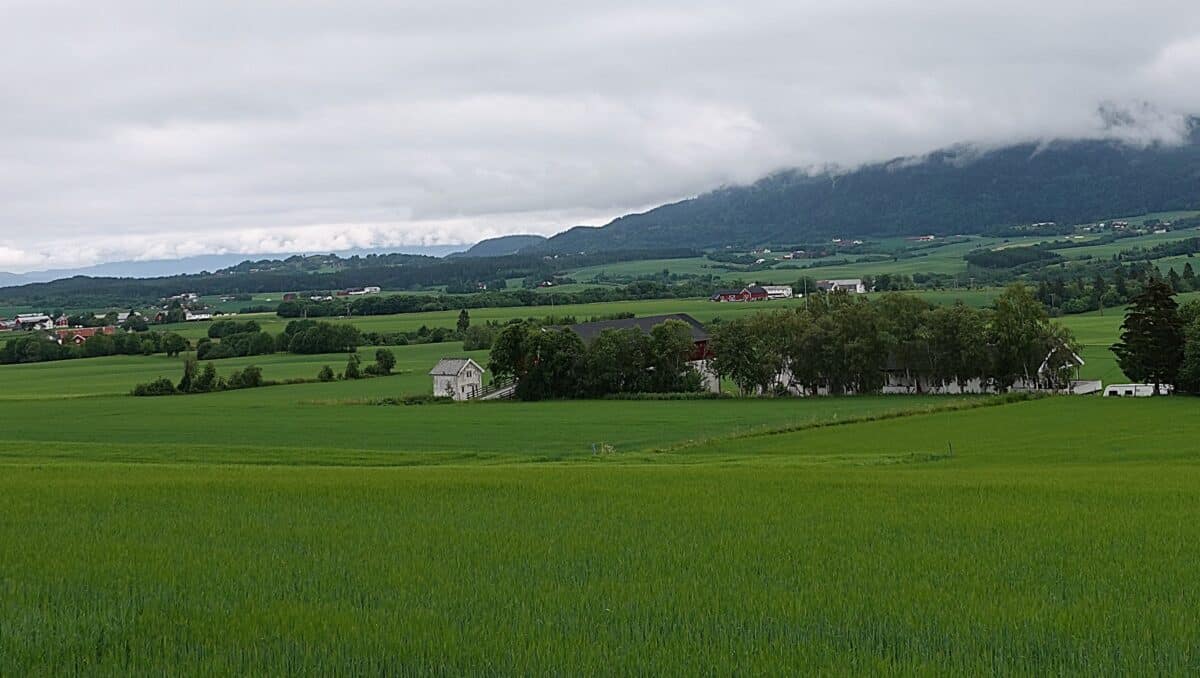
Before the Civil War, emigrants from Norway usually crossed the Atlantic on board a Norwegian sailing ship from a Norwegian harbor to New York or Quebec. This mode of transportation changed radically in the 1870s. Trans-Atlantic steamship companies from British ports offered faster journeys. A steamship crossed the Atlantic in less than half the time of a sailing ship. On top of that the passengers were less exposed to idleness, boredom, illness, and suffering. The introduction of steamships in the Atlantic trade reduced the number of deaths during Atlantic crossings considerably. According to Raymond L. Cohn the change from sail to steam in the migration trade took about fifteen years.[1] By 1873, steamships dominated the Atlantic immigration trade to New York City.
The number of deaths among emigrants on sailing ships had been relatively high. Most emigrants were not aware of that. When passenger lines began to compete harder for the migration trade, ticket prices fell. Even though they did not understand too well the risk they took when stepping onboard a sailing ship, the emigrants certainly understood lower prices. Passengers also appreciated better accommodation and food during the crossing. Norwegian sailing ships that worked the seasonal Norwegian emigrant trade, could no longer compete.
Norwegian emigrants passed through British ports
Transatlantic shipping companies like the Allan Line, Cunard Line, American Line, National Line, Inman Line, Guion Line, Dominion Line, State Line, and White Star Line all had agencies in Norwegian cities. These large steamship companies, however, depended on feeder ships to transport the emigrants from European and Norwegian ports to Britain. According to Nicholas J. Evans, more than 2,2 million trans-migrants from Denmark, Sweden, Norway, Finland, Germany, and Russia came through Hull on the east coast of Britain between 1836 and 1914. [2]
Transmigration from Trondheim, Norway, via Hull, Britain
The British Wilson Line began transmigration from Trondheim, Norway, via Hull, Britain, in the 1870s. For many years the Wilson Line dominated the feeder trade between Scandinavia and Hull. In 1867 it began operating a weekly service between Christiania (Oslo) and Hull. Wilson ships usually departed from Christiania every Friday and called at Kristiansand in southern Norway before crossing the North Sea. For all practical purposes the Wilson Line had a monopoly on this trade, and the company found no incentives to improve the standard of accommodation on board their ships.
The Wilson Line extended their business in Norway with a route between Hull and Bergen, which also called at Stavanger. In 1871 the line opened a route between Hull and Trondheim, leaving every fortnight. The ships in question also called at Kristiansund and Aalesund south of Trondheim and then crossed the North Sea. The service was later extended to weekly departures from Trondheim.
Growing emigration from Byneset, west of Trondheim
Byneset, an agricultural municipality west of Trondheim, and today a part of Trondheim, is even today an unknown entity among most Norwegians. I became aware of Byneset through my studies on Norwegian immigrants who settled in Central Montana. The connection between Byneset and Montana is very interesting, and a surprisingly high number of the Norwegians in Central Montana had grown up at Byneset! As we shall see, it is a very clear case of chain migration.
Very few people before and during the Civil War emigrated from Byneset, but after the war the number rose to more than ten persons each year. More than 120 persons emigrated from Byneset between 1866 and 1873. Emigration from Norway decreased generally during the world economic depression between 1873 and 1879. Only seventeen persons emigrated from Byneset between 1874 and 1878.
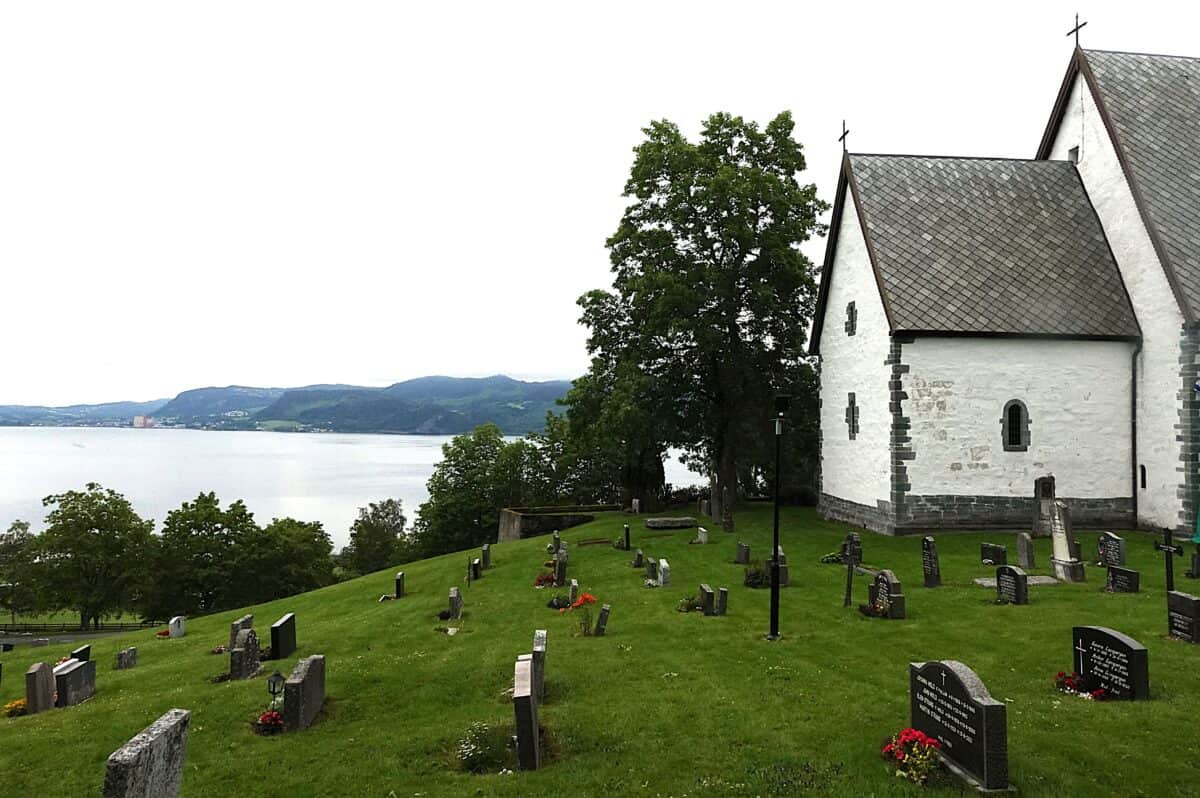
Then the numbers began to rise. A total of 519 emigrants left the municipality between 1880 and 1890.[3] The book Husmannsvesenet og utvandringa til Amerika. Byneset bygdebok, published by Byneset historielag in 2012, has become a very important source for my research on Norwegians in Montana. There is a list at the end of the book of emigrants from Byneset between 1860 and 1960. It is methodical and far more trustworthy than most such lists. I use it extensively in this article and many other articles already published or to be published on www.clengpeerson.no.
Each emigrant is listed with a number, followed by the name of the emigrant, his or her family relationships, the name of the farm the emigrant left, their age and the year they were born. This information is followed by the date and year the emigrant left Trondheim, the name of the ship, and the destination the emigrant gave officials when he or she left.
Byneset emigrants travelled on Wilson Line ships from Trondheim to Hull
The S/S “Tasso” of the Wilson Line turns up for the first time in the emigration list in fall 1871. From 1872 more or less all emigrants from Byneset left Trondheim on board the S/S “Tasso”. In fact, during the breakthrough year 1879, all Byneset emigrants sailed between Trondheim and Hull on the S/S “Tasso”.
“Folks called Johnson”
As in the case of all such lists, some individuals will be missing. There are emigrants from Byneset to Montana who are not to be found in Husmannsvesenet og utvandringa til Amerika. Byneset bygdebok. As an example, I use the book by Jim Annin (ed.), They Gazed on the Beartooths, volume 1. This book contains a very interesting article about “Folks Called Johnson”, telling the story of Albert Johnson and his family in Stillwater County, Montana. He was born at Byneset on July 23, 1871, arrived in Upper Michigan at age seventeen and began working in the mines. The mine where he worked, closed for a time. Albert decided to move west and try to get work in the Butte mines in Montana.
During his travel west, he heard stories about the new mining boom at Castle Mountain, Meagher County, Montana. His older brother John was already in that neighbourhood. He worked for sheep owner Martin Grande, Lennep, and the mines in Castle were close by. Albert decided to visit his brother before he continued west to Butte. He stepped off the train in Big Timber and moved north-west in the direction of Lennep. On his arrival at the Grande Ranch, Albert was immediately hired.
He stayed at the ranch for several years, met a Norwegian girl in the vicinity, and Martin and Karen hosted the wedding. Soon after they moved southeast to Stillwater County and stayed there the rest of their life. So far, I have neither been able to find Albert nor John Johnson on the printed list in Husmannsvesenet og utvandringa til Amerika.
Isabelle Johnson, Montana artist with roots from Byneset
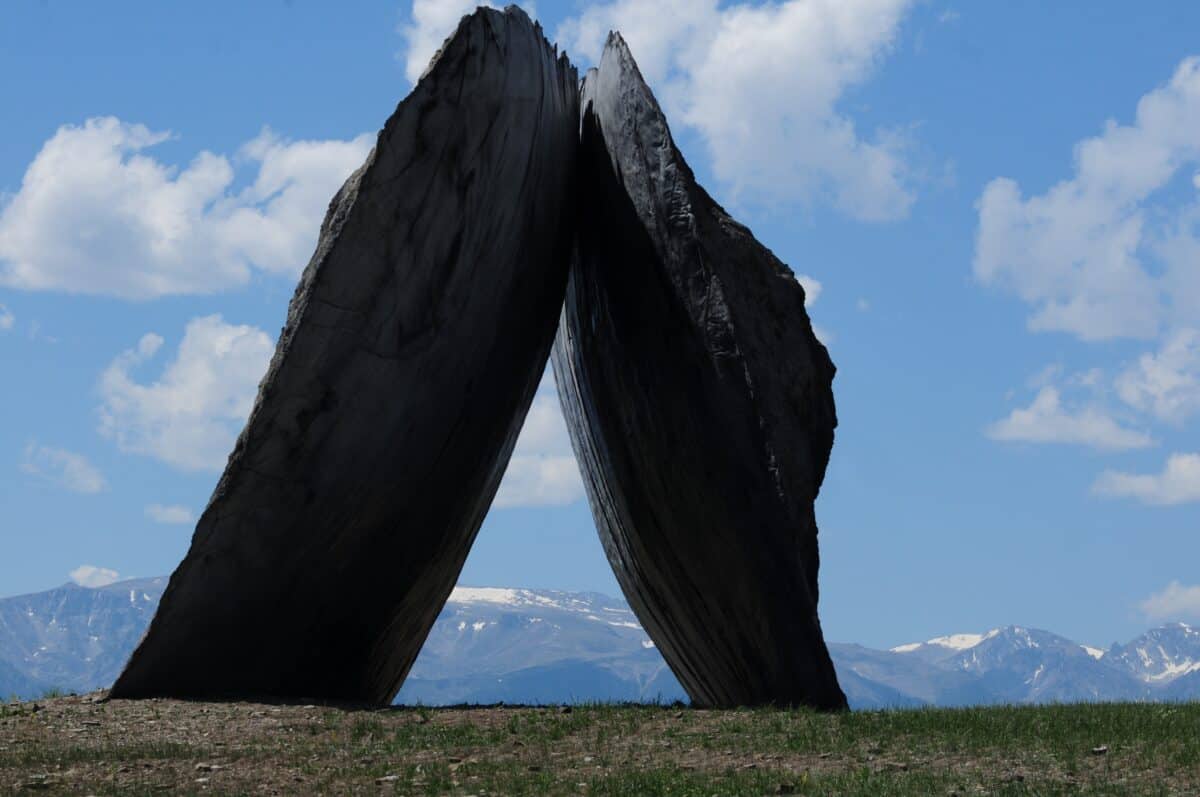
The article “Folks called Johnson” was written by Albert’s well-known daughter Isabelle Jonette Johnson. She was born on April 23, 1901, and died on May 13, 1992. Isabelle Johnson is best known today as one of the first modernist painters in Montana. She spent most of her life painting in the Stillwater River Valley and the Absaroka-Beartooth Mountains. She inherited the Johnson ranch and donated it to the outdoor sculpture park and art center known today as the Tippet Rise. Moreover, Isabelle J. Johnson has left a treasure trove of historical articles in the historical archives of the “Museum of the Beartooths” at Columbus, Stillwater County.[4]
Who was Karen Grande?
A total of 81 persons from Byneset emigrated on S/S “Tasso” on different trips from Trondheim in 1880. One of the emigrants that year came to play a crucial role in establishing organized chain migration from Byneset to the Grande Ranch in Lennep, Meagher County. Her name was Karen Amundsdatter Langørgen. She left on S/S “Tasso” on March 18, 1880.
Karen was twenty-four years old when she left. She travelled together with two older men from Byneset, Anders Larsen Opland and Anders Ingebrigtsen Gaustad. Karen was born on January 20, 1856, on the farm Langørgen Øvre Nordre, Byneset, and died at Lennep in Meagher County in June 1914. Some months after her arrival, on November 15, 1880, she married Martin T. Grande in Helena, the capital of Montana Territory, where she worked as a housekeeper in the F. Gamer household.
The two men registered Virginia City, Montana Territory, as their destination, while Karen’s destination was listed as Meagher County, Montana Territory. The North Sea crossing was just the first leg of their emigration to the United States. From Hull the group travelled by train to Liverpool, where they boarded a large steamship to the United States. After they arrived in New York, it took many days to travel west by railroad across the continent. The railway line of the Northern Pacific Railroad did not cross into Montana Territory before March 3, 1881. More traditional forms of transport had to be used to travel to Helena and Lennep in Meagher County.
The important story of Karen Amundsdatter Langørgen, Byneset
Close reading of relevant chapters in Husmannsvesenet og utvandringa til Amerika help us understand Karen’s background before she left Norway. Her mother was Gjertrud Andersdatter Megård, and her father was Amund Johnsen Langørgen, owner of the Langørgen farm. Her parents never married, but she lived together with her parents and her older sister Marit on the farm until she was four years old. In 1860 her father decided to marry another woman. Before the wedding took place, Gjertrud and her two daughters had to leave the farm.
Karen grew up under harsh realities, but they were not unknown in the countryside in that part of Norway. Her mother had no home of her own, and the solution chosen was to place the two girls with Gjertrud’s relatives. The oldest daughter, Marit, born on February 6, 1854, was placed with Randi and Kristen Olsen. Randi was Gjertrud’s aunt and Randi and Kristen had no children of their own. Gjertrud’s oldest child, her son Anders, born in 1838, was already living with this couple, and now Marit joined him.
Randi was 77 years old when Marit arrived, and she died in 1868. Marit was confirmed on October 17, 1869. Two years later she married the widower, Kristen Olsen Haugum, who was 63 years old. Marit was seventeen years old and already pregnant with their first child. A girl was born on August 12, 1871, and named Randi after Kristen Olsen’s first wife. The child, however, died after two weeks. Two years later Ole was born on August 15, 1873, followed by Randi on November 14, 1875. Three years later, on January 11, 1878, the third child Serine Gjertine was born, and then Andreas on February 7, 1880. Their youngest child Marie was born on July 22, 1882.
Karen had everything to gain by emigrating to Montana
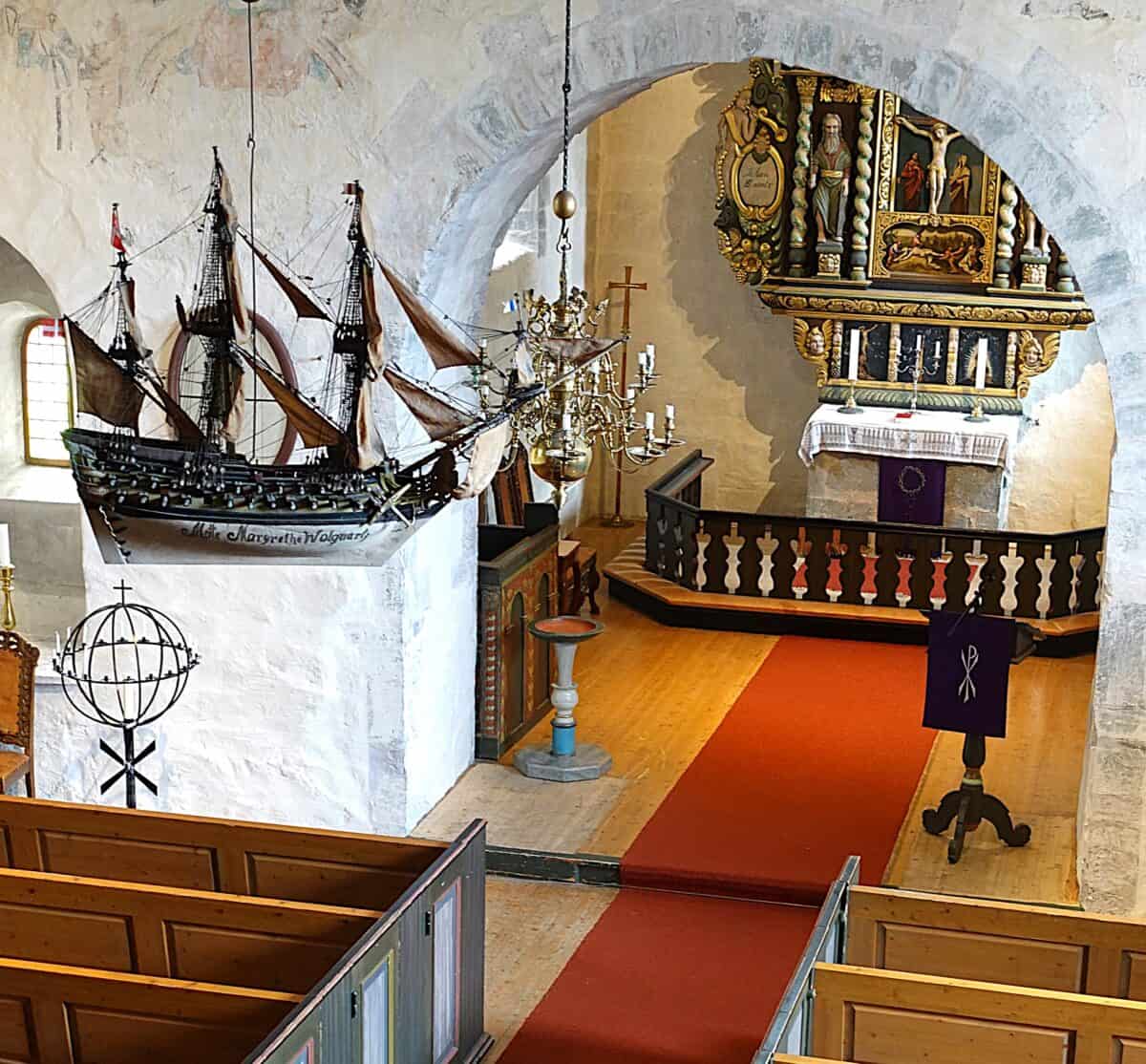
Karen was placed in the home of her mother’s older sister Marit Andersdatter (Megård) and her husband Jon Jonsen Kviset. They lived on a cotter’s place, “husmannsplass”, Høstadhagen, under the farm Høstad.[5] Karen still lived on this farm when she was confirmed in the Byneset church in 1871. At the time of the Norwegian census of 1875, she worked as a maid on the farm of another aunt, Karen Andersdatter Haugum.
Through her emigration decision Karen showed a lot of courage. When she arrived at Lennep, no other settlers lived west of the Musselshell forks. The Smith Brothers and Grande Brothers had settled on the Musselshell South Fork in 1878. She had moved from Norway and now lived at a totally unknown place. It was a man’s world. Even years after Karen married Martin Grande, she was still the only white woman living in the Lennep area of Meagher County.
Karen actively helped recruit sheepherders from Byneset
When Karen married Martin in 1880, he was in constant need of sheep herders and other workers. Husband and wife fully agreed that they could help many young people emigrate from poor backgrounds in Byneset and Trøndelag County by offering them work on the Grande Ranch in Montana. Martin T. Grande would pay their travel expenses from Trondheim to Comb Creek and Martinsdale, and they would be expected to work on the ranch until the cost of their tickets had been repaid.
This scheme was a common practice among Norwegian emigrants generally, not only in the second part of the 19th century, but also in the first decades of the 20th century. Paid tickets were sent from America to emigrants in Norway. The persons in question used their pre-paid ticket to travel to the household of the person who had sent it, and the immigrant would repay the cost of the ticket through work, usually for a year. Authors of Norwegian immigration history often leave the impression that pre-paid tickets were a gift from relatives. That was seldom the case. The main rule was that immigrants who got prepaid tickets had to repay the costs of their tickets, even if they were brothers or sisters. When the tickets were paid, however, the person in question was usually free to strike out on his own after a year.
Some Norwegians found it convenient not to speak English
Young Norwegians with little schooling who arrived on the Grande Ranch, often continued to speak Norwegian and especially the Trønder-dialect. The most enterprising among the recent immigrants, however, worked hard to learn the English language, and they also tried to follow in the footsteps of Grande and become sheep ranchers. But most sheep herders in the employ of Grande did not bother too much with learning English.
In his first novel, The House of Sky, Ivan Doig wrote that it was a well-known story in the district that the eastern end of Meagher County was originally “populated entirely by Norwegian herders who knew but two words of English: Martin Grande, the name of their employer.”[6] One of the jokes often told was the following: When a Norwegian sheepherder was asked about the name of the president of the United States, he would reply: Martin Grande.[7]
As late as 1906 and 1907 many herders in the employ of Grande could still not speak a word of English. “When I rode to their camp all the answers I could get, no matter what the question, would be Martin Grande. Then I would have to go to the home Ranche, sometimes from fifteen to thirty miles and get an interpreter and ride back and tell them what we wanted them to do.”[8]
Karen’s relatives and the Grande Ranch
Among the first immigrants Karen Grande recruited, several came from her own family at Byneset. The content of Karen’s letters back to her family and relatives left no doubt that she was happy with her new life in Montana. Among her close relatives at Byneset few had promising prospects for their future. Karen was convinced they would be far better off in Montana.
The migration chain Karen started, began with her sister Marit and her five children. Marit’s husband Kristen Olsen Haugum on the farm Gaustad-Perstu died on May 1, 1883, at the age of 75. Karen urged Marit to emigrate to Montana and they were welcome on the Grande Ranch on Comb Creek. Marit decided to follow the advice of her younger sister. Two years after the death of her husband, on May 6, 1885, Marit left Trondheim on S/S “Hero” to Hull, together with her two smallest children, the five-year-old Andreas, and three-year-old Marie. Not long after Marit’s arrival in 1885, Martin and Karen adopted her son Andreas. In Montana he was known throughout his life as Andrew C. Grande.
When she arrived in Meagher County, Marit still owned the farm Gaustad-Perstu, however, she sold the Byneset farm in September 1886. Six years later two of the older children joined her in Montana. Ole and Randi left Trondheim for Meagher County on S/S “Domino” on April 27, 1892. Serina, born in in 1878, emigrated on June 8, 1898, on S/S “Tasso”. She traveled together with Karen and Martin Grande and their adopted son Andreas, who was her older brother.[9]
What happened to Marit and her children in Montana?
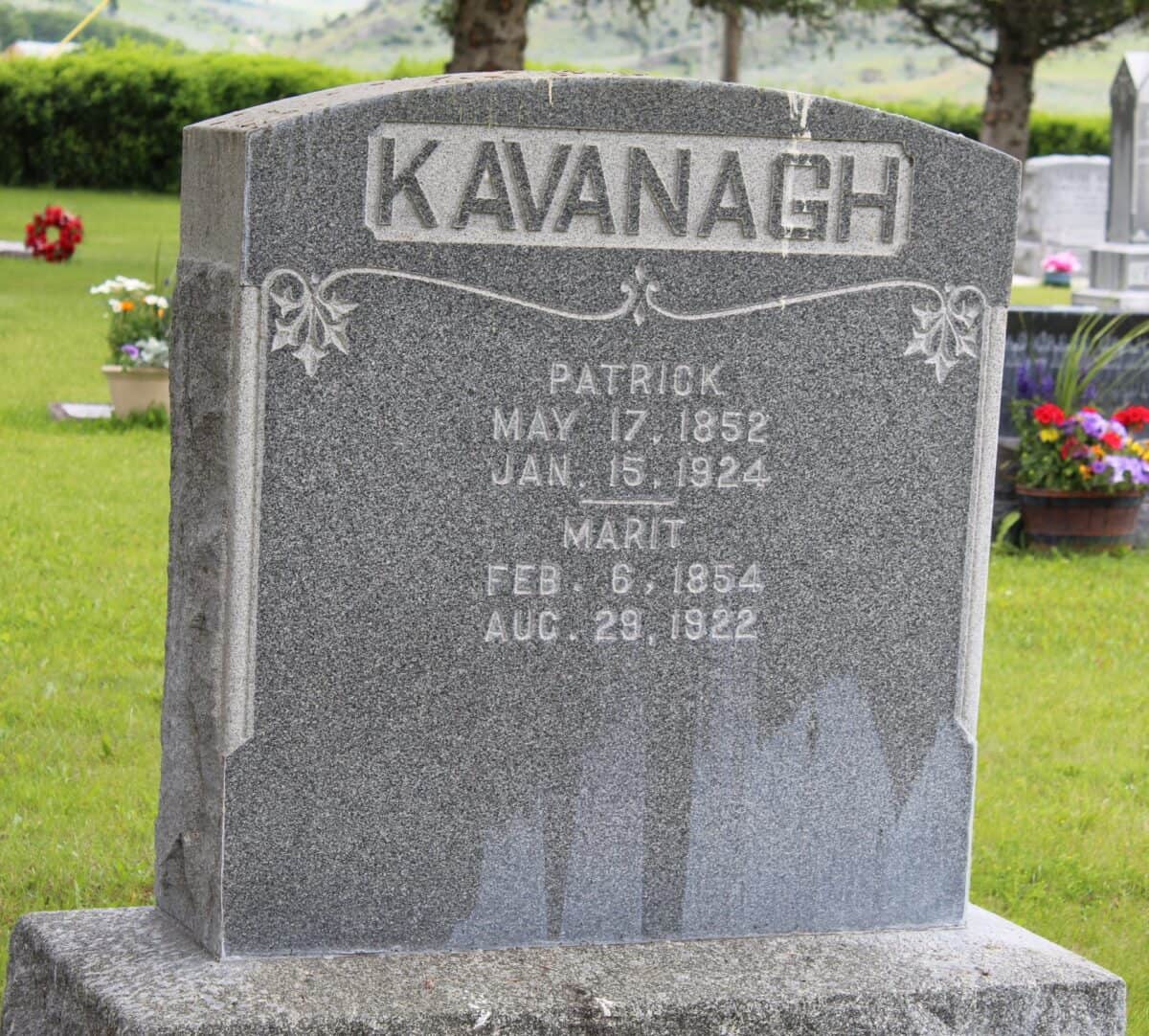
The life of Marit and her children in Montana first centered around the Grande Ranch in Lennep. They worked there for a shorter or longer time. But Marit and several of the siblings moved to Castle and Robinson to work during the mining boom in the late 1880s and early 1890s. Big family occasions such as weddings often took place on the Grande Ranch. This was the case in 1896, when Marit married Patrick Kavanagh, born in 1852 in Canada. Marit died in 1922 and Patrick in 1924.
Randi married Martin Hereim from Sauda, Rogaland County
Marit’s daughter Randi Olsen met the Norwegian immigrant Martin Hereim from Sauda municipality, Rogaland County, in Castle in 1892, the year she arrived. Five years later, in 1897, Martin and Randi were married on the Grande Ranch.
Martin Hereim, who was born on September 20, 1866, at Sauda municipality, Rogaland County, emigrated to the United States in 1889. He disembarked in New York, traveled west across the continent to Big Timber, and went directly to the Castle mines in Meagher County. When the Castle mines closed, he began to work as a sheep herder for Martin Grande. For a while he also worked together with his brother Torkel in the sheep business before he decided to move south. He settled on a homestead at Red Lodge Creek, Carbon County. When Martin returned from Carbon County to marry Randi, the couple settled on a homestead two miles west of Lennep in 1899.
Hereim started out with one cow in 1900, which he bought in White Sulphur Springs for 35 dollars, and from time to time he bought small herds of cattle. Over the years he bought more land, like the Jay Moore place in 1907; two sections at 18 dollars per acre. Hereim built up a herd of 300 head of cattle, and also a herd of 85 horses. In 1941 the Hereim ranch had 813 sheep, 74 cattle and 20 head of horses. At that time the Hereim ranch consisted of 3,755 acres plus 200 acres of leased land.[10]
Ole C. Olsen, the oldest son of Marit Amundsdatter
Ole C. Olsen was born at Byneset on August 15, 1873. After Ole and his sister Randi emigrated to Montana in 1892, he worked two years for Martin T. Grande before he tried his luck in Alaska. For a while he worked in the Rothschild mine on Douglas Island near Juneau. When he returned to Montana, he bought 320 acres of land on the Shields River. He lived there for a year but returned to Meagher County in 1903 and worked on the Grande ranch for two years. Ole married Inga Nelson on September 5, 1901. The couple became the parents of four children.[11]
Serine married another Byneset emigrant
Marit’s daughter Serine Gjertine Kristiansdatter Gaustad emigrated on the S/S “Juno” from Trondheim on June 8, 1898. Two years later she married Ole Sivertsen Eggen at Castle. He had also grown up at Byneset, on the farm Eggen Øvre. He was born on May 6, 1866, and was 22 years old when he left Trondheim on March 22, 1888. At first, he worked as a sheep herder in Meagher County, but was also attracted by the possibilities in the Castle mines. In 1899, Eggen moved southeast to Stillwater County and settled on a homestead on the East Rosebud.
Martin T. and Karen Grande adopted Andrew and Mina
Some years years after Martin and Karen Grande had adopted Andrew, they also adopted Mina Berg. Mina Andersdatter Berg was born in 1889. She was the daughter of Andrew Berg and a niece of Karen’s, who died at a young age in Castle. Mina grew up on the Grande Ranch. She returned to Lennep after High School and remained there until she married Nels E. Voldseth on the Grande Ranch on November 15, 1911.
Nels Voldseth was born at Verran, Trøndelag, in 1887, and died on January 1, 1974. He grew up at Verran, not far from the place where Martin Grande grew up, and the two were related. He arrived at Lennep, Montana, in 1907.
When Mina and Nels married in 1911, Nels had filed on a homestead near Gildford in Hill County, close to the Canadian border. The couple lived on this farm until 1917, and their sons George Andrew (1913) and Norman Miles (1917) were born there.
Karen Grande died in 1914 – Mina and Nels returned to Lennep
Martin T. Grande was in his seventies when Karen died. Mina was strongly in favor of going back to help him. When the Voldseth family returned to Lennep in 1917, Nels Voldseth became the manager of his father-in-law’s ranch. He held the position as ranch manager until the death of Martin Grande on April 22, 1930.
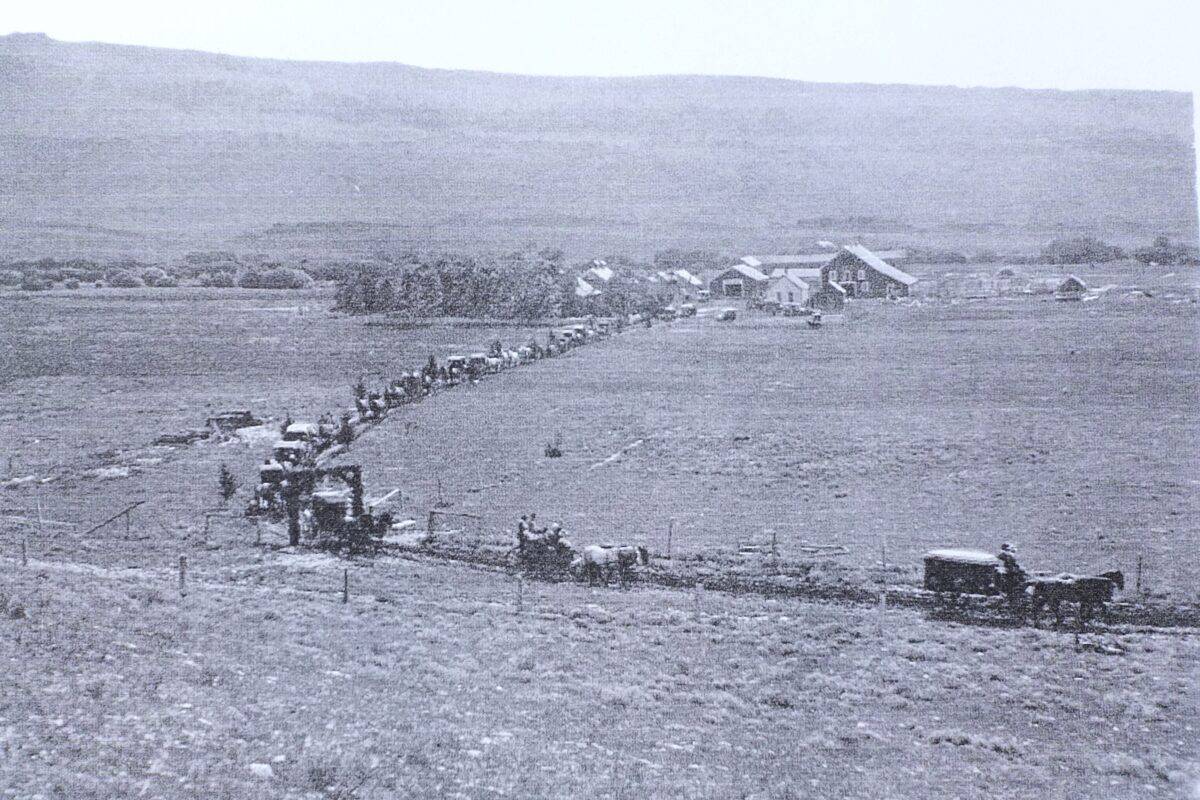
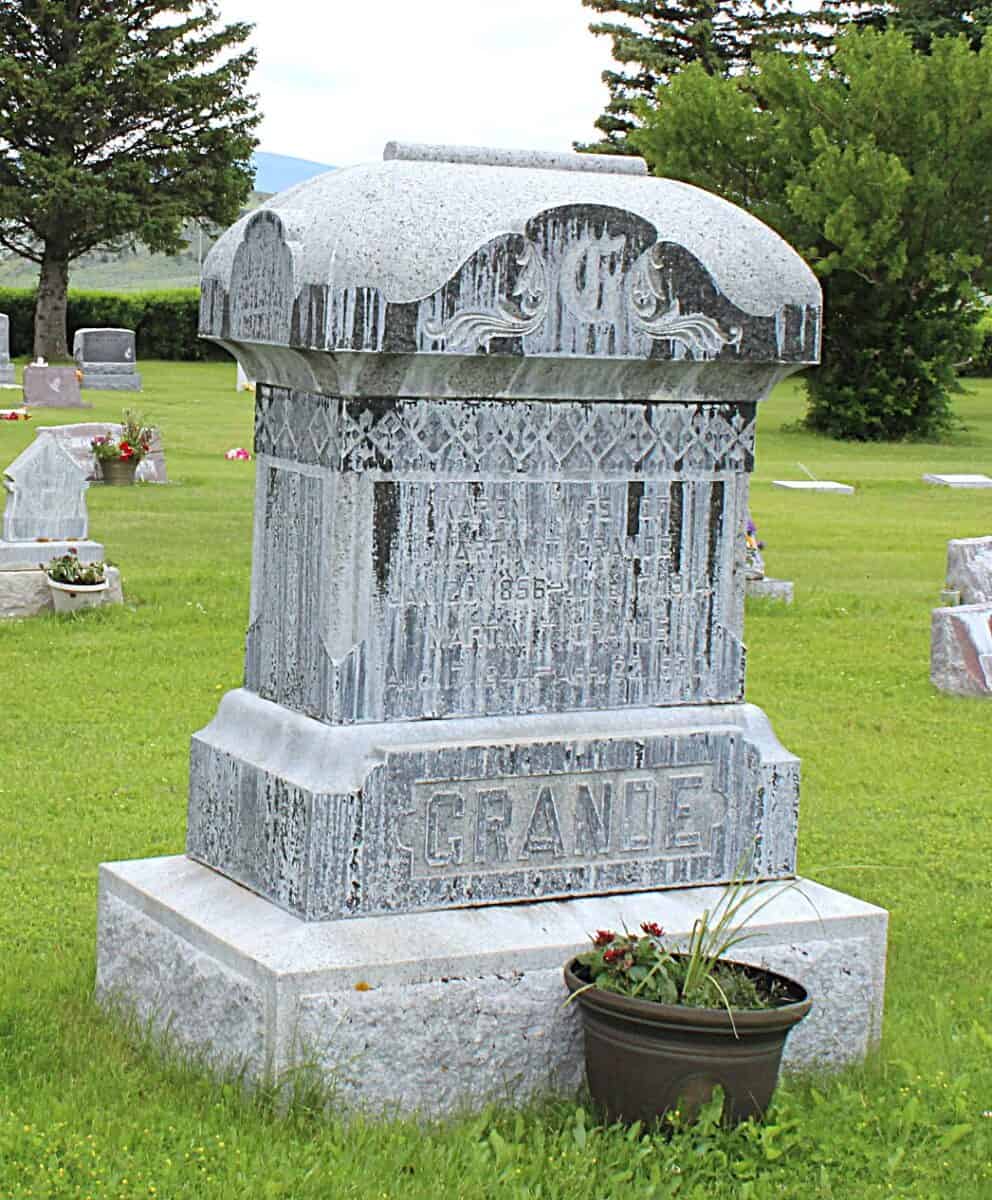
Martin Grande left the bulk of his estate to be shared equally between his children Andrew C. Grande and Mina G. Voldseth. In 1932 Mina and Nels took over the Grande home ranch of some 14,000 acres along with two bands of sheep and several hundred cattle.
A growing number of Norwegian immigrants chose to live in Central Montana
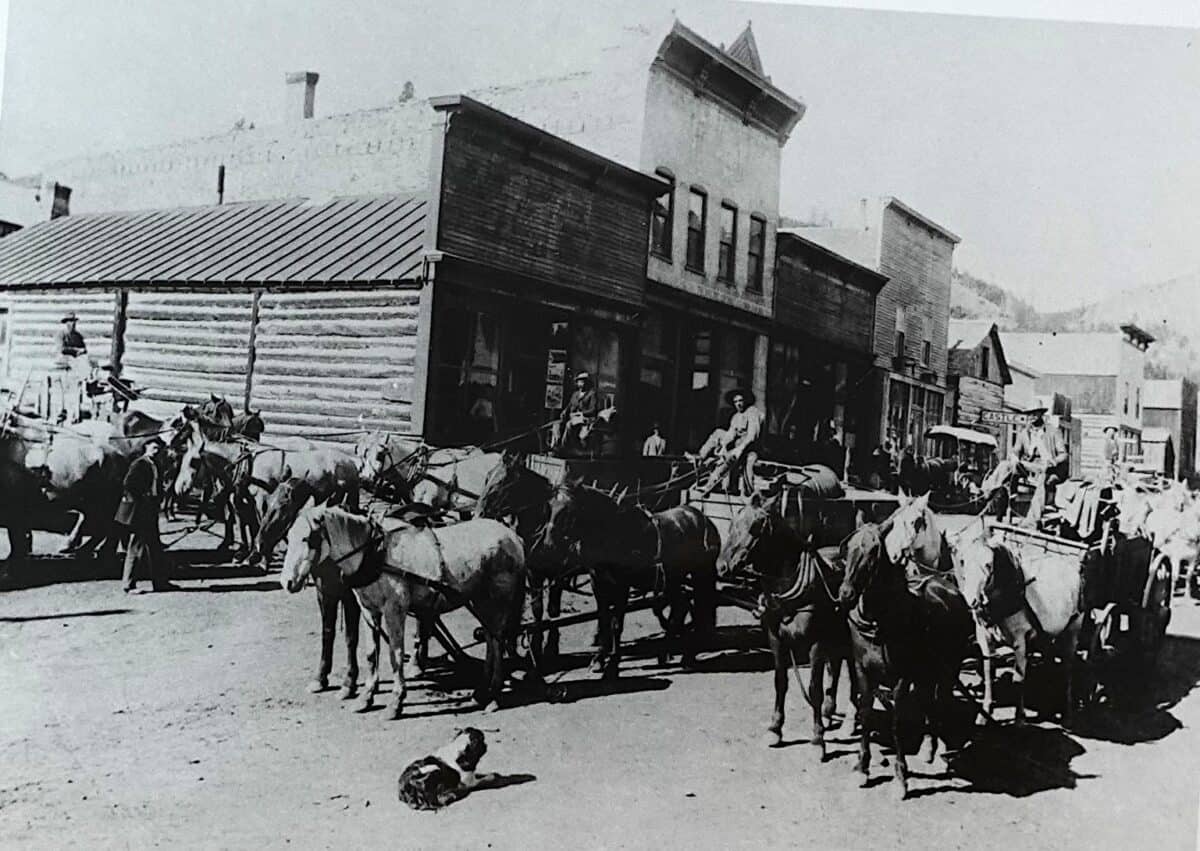
The mining boom in Castle in the late 1880s and early 1890s brought many Norwegian immigrants to Central Montana. When the mining boom busted, most left the Castle area. But many Norwegians chose to settle permanently in the area. They found work in the livestock industry as workers, homesteaders and owners of their own ranches – in Meagher County, Sweet Grass County, Stillwater County and Carbon County.
Their stories will be discussed in articles to come. We will follow them to Castle first and then as settlers in neighboring counties.

Notes and acknowledgements
Images: All color photos: (c) Inger Kari Nerheim. Funeral cortege for Karen Grande: (c) In family ownership; used by courtesy of David Voldseth. Castle street scene; courtesy of D. Voldseth (c) and Special Collections image collection (copy), MSU, Bozeman.
[1] On mortality rates in the Atlantic migration trade, see Raymond L. Cohn, “Mortality on Immigrant Voyages to New York, 1836-1853”, Journal of Economic History 44, no. 2. (June 1984): 289-300; Raymond L. Cohn, “The Transition from Sail to Steam in Immigration to the United States”, Journal of Economic History 65, no. 2. (June 2005): 469-495, 492.
[2] Nicholas J. Evans, “Indirect Passage from Europe. Transmigration via the UK, 1836-1914, Journal of Maritime Research 3, no. 1 (2001): 70-84.
[3] Husmannsvesenet og utvandringa til Amerika. Byneset bygdebok, bind VII, Byneset historielag 2012, p. 137, pp. 386-387. Some of the narratives in this article can be found in the MSU Special Collections at Bozeman, the series on Livestock History from 1941, see below. For details in the life of Karen Grande in Montana, see the annotated family history; Voldseth, Norman and June, The TG Ranch Story, Lennep, 1999.
[4] Jim Annin, They Gazed on the Beartooths, vol. 1, Columbus, Montana, 1964, pp. 270-275; Durden, Forbes, Vettel Becker, “A Lovely Business”. Isabelle Johnson’s Montana, Yellowstone Art Museum, Billings, Montana, 2015.
[5] Husmannsvesenet og utvandringa til Amerika. Byneset bygdebok, bind VII, Byneset historielag 2012, p. 279-280.
[6] Ivan Doig, This House of Sky. Landscapes of a Western Mind, New York 1978, p. 169.
[7] MSU Library, Bozeman, Special Collections, WPA 2336 Livestock History, 230.037, 1941; Research worker Alva J. Vinton, “Subject: History of sheep,” January 9th, 1941.
[8]MSU Library, Bozeman, Special Collections, WPA 2336 Livestock History, 230.021, 1941; Field Writer Alva J. Vinton, Assignment no. 6, p. 2. “Subject. A Few Notes of Early Experiences as a Ranger”, March 14th, 1941.
[9] Husmannsvesenet og utvandringa til Amerika. Byneset bygdebok, bind VII, Byneset historielag 2012, p. 418.
[10] MSU Library, Bozeman, Special Collections, WPA 2336 Livestock History, 230.075, 1941; Alva J. Vinton, “Subject: Martin Herein Ranche”. (Note misspelling of Hereim. G.N.)
[11] MSU Library, Bozeman, Special Collections, WPA Livestock 230.079, 1941; “Subject: Ole C. Olsen Ranche”, interview by Alva J. Vinton, June 6, 1941.
Views: 96
